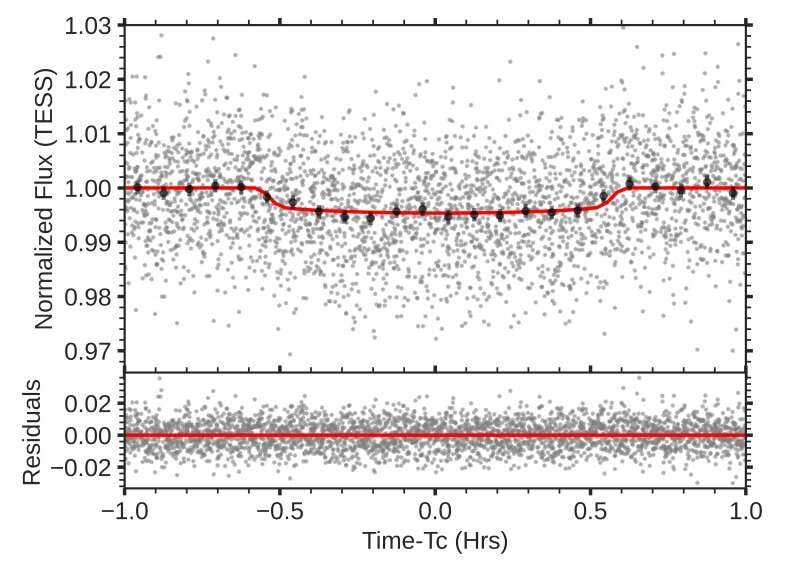New ‘super-Earth’ orbiting M-dwarf star discovered

An international team of astronomers reports the discovery of a new “super-Earth” exoplanet with NASA’s Transiting Exoplanet Survey Satellite (TESS). The newfound alien world, designated TOI-1680 b, is about 50% larger than the Earth and orbits an M-dwarf star located some 120 light years away. The finding was detailed in a paper published July 11 on the preprint server arXiv.
TESS is conducting a survey of about 200,000 of the brightest stars near the sun with the aim of searching for transiting exoplanets. So far, it has identified nearly 6,700 candidate exoplanets (TESS Objects of Interest, or TOI), of which 363 have been confirmed so far.
In a recent research paper, a group of astronomers led by Mourad Ghachoui of the University of Liège, Belgium, confirmed another TOI monitored by TESS. Ghachoui and colleagues report that a transit signal has been identified in the light curve of an inactive M dwarf known as TOI-1680. The planetary nature of this signal was confirmed by follow-up ground-based photometry, high-resolution imaging and spectroscopic observations.
“We have reported the discovery and initial characterization of TOI-1680 b, a super-Earth orbiting a faint mid-M dwarf (V=15.87),” the researchers wrote in the paper.
TOI-1680 b has a radius of 1.46 Earth radii and a predicted mass of about 3.18 Earth masses, which yields a mean density of 5.5 g/cm3. The planet orbits the host star every 4.8 days, at a distance of approximately 0.03 AU from it. The equilibrium temperature of TOI-1680 b is estimated to be 404 K.
The parent star TOI-1680 (also known as TIC 259168516) is a faint and inactive star of spectral type M4.5. It is about five times smaller and less massive than the sun. The distance to TOI-1680 was calculated to be 121 light years and the star’s effective temperature was found to be about 3,211 K.
The study found that TOI-1680 b has a transmission spectroscopic metric (TSM) at a level of 7.82. This result suggests that TOI-1680 b could be a suitable target for atmospheric characterization studies with NIRSpec/PRISM instrument onboard the James Webb Space Telescope (JWST).
“According to the transmission spectroscopy metric (TSM) of Kempton et al. (2018), TOI-1680 b could be a promising candidate for atmospheric characterization with the JWST…. Specifically, amongst 63 targets, TOI-1680 b ranks as the thirteenth most amenable target for these studies,” the authors of the paper noted.
Besides atmospheric characterization studies, Ghachoui’s team proposes radial velocity measurements of TOI-1680 b with the MAROON-X high-resolution, optical, fiber-fed echelle spectrograph at the 8.1-m Gemini North telescope. Such investigation should provide direct mass measurement, which will be crucial in order to determine the composition of this planet.
More information:
M. Ghachoui et al, TESS discovers a super-Earth orbiting the M dwarf star TOI-1680, arXiv (2023). DOI: 10.48550/arxiv.2307.05368
© 2023 Science X Network
Citation:
New ‘super-Earth’ orbiting M-dwarf star discovered (2023, July 20)
retrieved 20 July 2023
from https://phys.org/news/2023-07-super-earth-orbiting-m-dwarf-star.html
This document is subject to copyright. Apart from any fair dealing for the purpose of private study or research, no
part may be reproduced without the written permission. The content is provided for information purposes only.
For all the latest Science News Click Here
For the latest news and updates, follow us on Google News.

